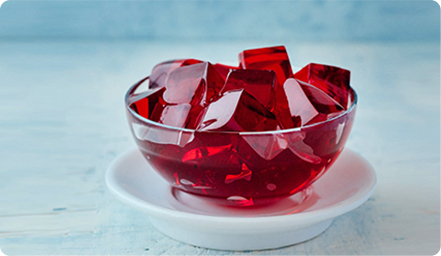-
July, 26,2025
Understanding the Role of Bloom Strength in Soft Gelatin Capsules
-
July, 25,2025
Bloom Strength and Its Impact on Hard Gelatin Capsules
-
July, 21,2025
How Gelatin Is Revolutionizing Pet Food: A Healthier Option for Dogs
-
June, 22,2025
Collagen as a Trusted Ingredient: Meeting Global Demand with Reliable Supply
Gelatin in Candy Production: Why It’s Essential for Manufacturers
Candy production has been a changing art, year after year, with manufacturers always searching for ingredients that provide the right texture and flavor, thereby assuring the stability of the products. Gelatin is probably the most established ingredient in confectionery products and plays several key roles in producing high-quality candies. This article examines the various roles gelatin plays in candy production, the different applications of gelatin in candies of various types, how to select the right gelatin for your production, and why it's indispensable to candy manufacturers.
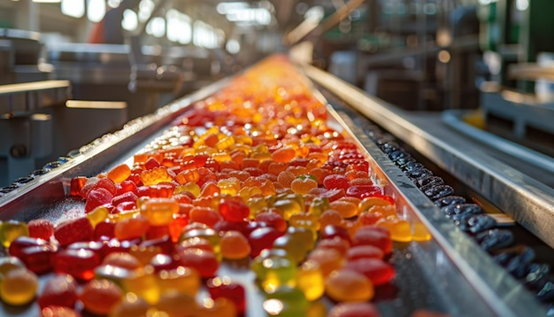
The Role of Gelatin in Confectionery
Gelatin is a natural protein obtained by the partial hydrolysis of collagen, usually originating from bovine hides or pigskins. Its particular properties provide many reasons for gelatin to be in its primary position among other ingredients in the confectionery industry. Why is gelatin such a vital product during candy production? Here is why:
1. Gelling Agent
Among the main functions of gelatin in candy production, one could name its work as a gelling agent. Gelatin has the ability to form a thermoreversible gel; that is, upon heating, it melts, and at cooling, the gel solidifies. This characteristic is not only important in a wide range of applications but also crucially critical for gummies, jelly candies, and other soft confectionery products. The gelling strength of gelatin, commonly measured in terms of "Gel strength," defines the texture and firmness of the final product. A higher Gel strength produces firmer gels, while lower ones produce softer ones.
2. Thickener and Stabilizer
Most candy formulations, in general, call for attaining a specific consistency. Gelatin is an excellent thickener; it allows the manufacturer to achieve a range of textures from soft and chewy to firm and elastic. It serves as a stabilizer in maintaining the shape and integrity during manufacturing and packaging of candies. This ensures that candies remain in their texture and quality for a long time.

3. Emulsifier
It is an emulsifier, especially in candy products containing fats and oils, such as nougat. It combines ingredients that would otherwise separate, such as water and oils, into a smooth, homogenous mixture. This property is critical for the attainment of the desired mouthfeel and consistency in the manufacturing of nougats, marshmallows, and cream-filled candies.
4. Coating Agent
Gelatin can be used as one of the coating agents in candy production. It gives a shiny appearance to many products like jelly beans and gummy candies, hence improving their appearance, and probably may create a barrier to prevent loss of moisture. Such a shiny coating makes candies look more attractive and preserves the texture and flavor, hence extending the shelf life of candies.
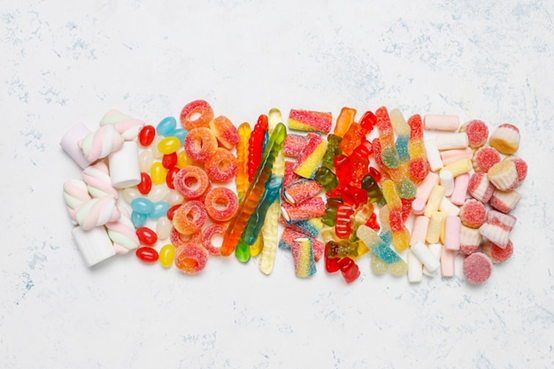
5. Prevents Crystallization of Sugar
One of the major problems observed during candy production is the crystallization of sugar, which influences both texture and mouthfeel. The crystallization of sugar is prevented by the addition of gelatin, allowing the candies to keep a smooth and consistent texture. This is important in products such as nougat or in chewy candies where a smooth, uniform texture is key for quality.
6. Binder
Gelatin can serve as a binder in such chewy candies as nougat and caramels to help hold the ingredients together. This gives structural support to a fudge-like candy without hard or brittle textures. This enables manufacturers to have the perfect texture balance with their products.
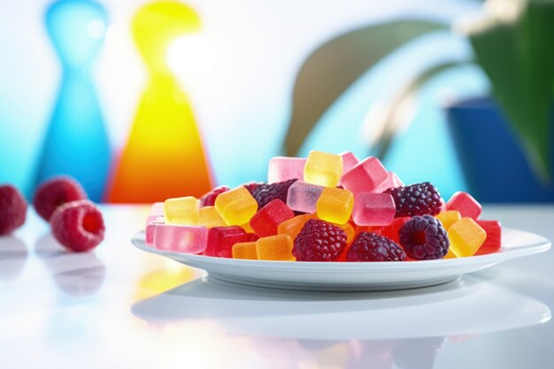
Funingpu’s gelatin products provide reliable gelling, thickening, and emulsifying properties, tailored to meet the unique demands of your candy formulations. Our gelatin ensures stability and consistency in every batch.
Gelatin Applications in Different Types of Candy
By nature, gelatin is versatile and can be applied to a wide range of confectionery products that have specific textures and consistencies to back up this statement. How gelatin is applied in candy types is highlighted below.
1. Gummies
Gummies are among the most popular kinds of candies based on gelatin. The use of gelatin as a gelling agent contributes much to the gummy and elastic character of gummies. Normally, a high Gel strength gelatin (200-250 Bloom) is used by the manufacturer to reach the proper firmness-chewiness degree. The gelling properties of gelatin enable gummies to keep their shape and texture and give an enjoyable chew that smoothes down in the mouth.
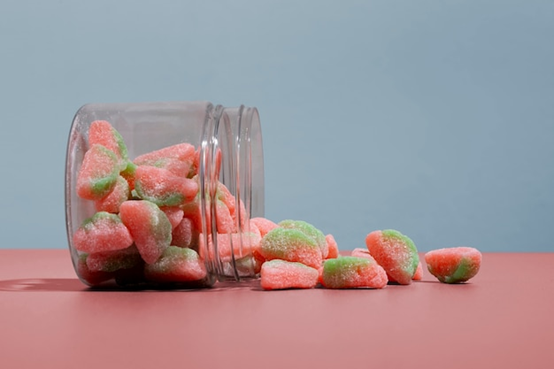
2. Jelly Candies
Gelation is responsible for jelly candies such as jelly beans, fruit chews, and gummy bears. Besides giving a jelly-like appearance, gelation allows candy to retain its shape. The thermoreversible nature of gelatin allows the jelly candies to keep their form during the production and packaging process while providing that melt-in-your-mouth sensation that consumers just love.
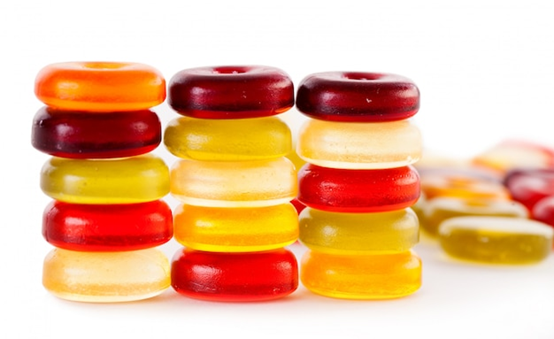
3. Marshmallows
Marshmallows are whipped to a light and airy texture with the assistance of gelatin. Gelatin can serve as both a gelling and foaming agent, trapping air inside a marshmallow mixture and giving it a soft and fluffy appearance. The role of gelatin in marshmallow production is specific because of its gelation ability to form a network that provides stability to air bubbles. That is how marshmallows get such an amazing texture, which is spongy and elastic.
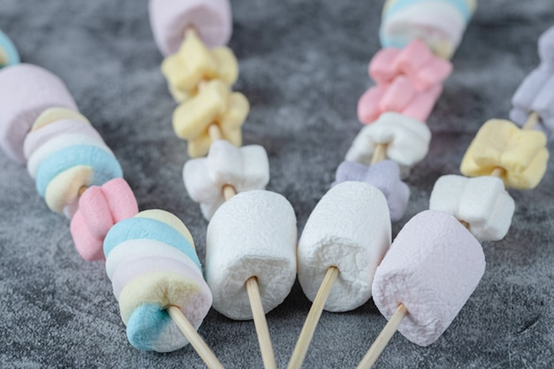
4. Nougat and Chewy Candies
Gelation is the binder in nougat, caramels, and other chewy candies, producing a tender yet chewy candy. In candy, gelatin inhibits sugar crystallization which gives candies a gritty texture. Additionally, gelatin establishes the structural characteristics that give candy its ideal chew without a tough or sticky texture. The emulsifying properties of gelatin are also important in combining fats with sugars in a cooking process to provide a smooth consistent texture.
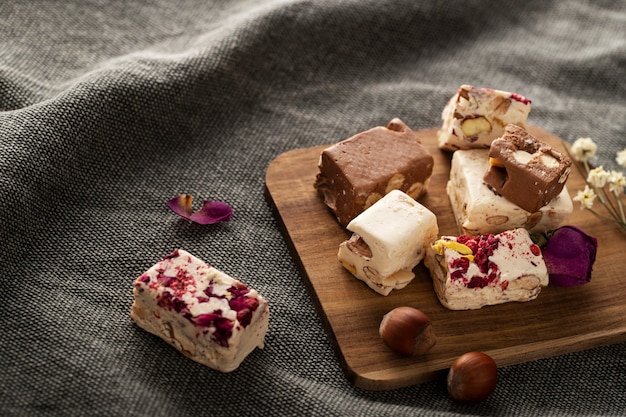
Choosing the Right Kind of Gelatin for Your Candy Production
Gelatin is an essential element in candy production; therefore, a critical choice has to be made in respect thereof. Here are some factors that can be looked at when one is choosing gelatin for use in candy production.
1. Gel strength
Gel strength refers to the gelling power or the firmness of gelatin. In candy making, Bloom's strength ranges from 50 to 300. Usually, gummies and jelly candies use high Bloom gelatin, which is between 200-300 Bloom to give them a firmer and more elastic texture. Low Bloom gelatins, that range between 50-150 Bloom are used in candies that are eaten with marshmallows and nougats. Getting the right Bloom is important in determining the kind of texture and mouthfeel a candy will have.
2. Gelatin Type
There are various sources of gelatin, which mainly include bovine and porcine. There are also some regional preferences for bovine or porcine gelatin, as well as religious considerations, such as halal or kosher certification. Specific types of gelatin might also be selected based on their specific gelling or emulsifying properties. Bovine gelatin provides a slightly firmer texture, while porcine gelatin contributes to an elastic, chewy consistency.
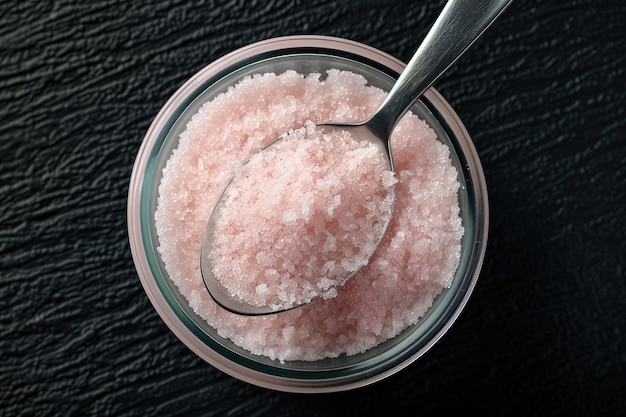
3. Quality and Purity
Confectionery manufacturing requires good-quality food-grade gelatin. High-purity gelatin can ensure that the finished candy is impurity-free in flavor, texture, and visual appearance. Good gelatin suppliers provide relevant certifications like ISO, HACCP, Halal, and Kosher, proving the product attains a certain standard for safe and quality food supplies. Investment in high-quality gelatin can go a long way in improving the shelf life, texture, and thereby the overall quality of candy.
At Funingpu, we understand the critical role gelatin plays in candy production. Our food-grade gelatin, sourced from high-quality raw materials and certified by leading standards like ISO and FSSC, ensures manufacturers get consistent results across a wide range of confectionery applications.
4. Functional Additives
For some candy formulas, the use of specially modified gelatins or gelatin blends containing functional additives can be further enhanced. Adding natural colors, flavors, or stabilizers to gelatin can make brightly colored, great-tasting confections. Again, the manufacturer should be in close contact with the gelatin supplier in the selection or customization of the ideal gelatin product for specific candy formulation applications.
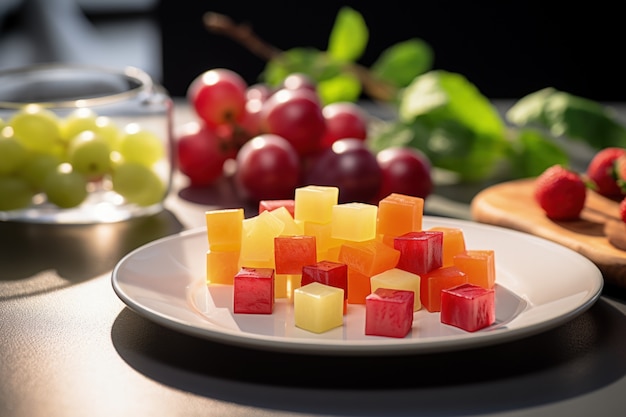
Funingpu offers a wide variety of gelatin types, including both bovine and porcine options, catering to diverse preferences and regional regulations. Whether you need high Bloom gelatin for gummies or lower Bloom for marshmallows, our experts can guide you in choosing the best solution. Additionally, all our gelatin products meet stringent quality standards, including Halal and Kosher certifications, ensuring your products meet both regulatory and consumer demands.
Final Thoughts
Gelatin is an indispensable material in candy manufacturing because it imparts a host of functionalities, which create high-quality confections. Gelatin functions in candies as a gelling agent, emulsifier, thickener, binder of water and other ingredients, and inhibitor of sugar crystallization in many candy items to impart desired texture, consistency, and stability. Besides, the right kind and quality of gelatin will also ensure that the manufacturer's candy products meet the consumer's expectations in taste, texture, and appearance. This, therefore, means that gelatin remains one of the indispensable and versatile natural ingredients that are quite crucial for the manufacture of candies that are delicious, qualitative, and enjoyable for all consumers around the world.
As a leading gelatin manufacturer, Funingpu offers the best food-grade gelatin for confectionery use, accredited by ISO, GMP, FSSC, IMSOC, and Kosher. Partner with us for reliable, high-quality gelatin solutions that make candy-making easier.
FAQ
1. Which Bloom of gelatin is used in gummy candy manufacturing?
Generally speaking, the High Bloom gelatin, 200-250 Bloom, will be wanted because it has the firm, chewy texture wanted by consumers.
2. Can bovine or porcine gelatin be used interchangeably in the production of candy?
Both bovine and porcine gelatins can be used interchangeably for candy, but they tend to give varied textures. Bovine tends to provide a firmer candy, while porcine imparts more elasticity into it. The choice may also depend on consumer preferences, dietary restrictions, or religious considerations.
3. How does this ingredient prevent the crystallization of sugar in candy?
Gelatin will inhibit the crystallization of sugar by adsorbing onto the surface of the sugar molecules and not allowing them to come together in large crystals. This will give a smooth texture and a uniform candy.
4. What type of quality should I look for when purchasing gelatin to use for candy making?
Look for food-grade gelatin that is also certified with various standards such as ISO, GMP, FSSC, and Kosher. High-purity gelatin ensures that the final product does not contain any impurities that would affect its quality.
Phone: +86-577-88105990
Mobile: +86-138 5886 1938
Official Website: www.fnp-gelatin.com
Email: sales@funingpu.com
Address: No. 1-10 Wenpu Road, Yacheng Town, Xiapu County, Ningde City, Fujian Province

